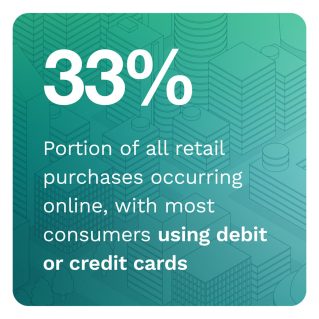Inflation has impacted consumers not only concerning how much they are paying at checkout but also their checkout experiences. With 49% of consumers annually earning more than $100K living paycheck to paycheck in March, it should be no surprise that the leading cause of payment declines in April was insufficient funds, according to recent PYMNTS research.
The Digital Economy Payments May 2022 U.S. Edition draws from a census-balanced survey of 3,067 U.S. consumers between April 8 and April 17. The survey asked consumers about their shopping and payment experiences and how their perception of rising prices impacted those experiences and their preferences.
This is what we learned:
• Consumers in all income brackets living paycheck to paycheck with issues paying bills have been hit hardest by payments fraud in April.
PYMNTS found that consumers who were the least capable of absorbing the costs of fraudulent payments made in their name were also the most frequent targets of fraudsters. Millennials and those earning more than $100,000 were the most likely to become victims of payments fraud last month, according to the report.
Another significant development was a reduction in how consumers are spending.
• Consumers appear to have altered their spending habits in response to higher prices: PYMNTS found that consumers spent an average of $95 for their last grocery purchase in April, compared to $110 in March.
According to the report, there has been a meaningful reversal in consumer spending trends that emerged in March. With inflation rates still uncertain, consumers are likely shifting their purchasing preferences to prioritize bargains or retailers that cater to price-conscious shoppers. Shoppers also reduced their retail spending from $103 in March to $98 in April.
• In April, many consumers shifted some of their grocery shopping tasks from online to in-store
Per the report, the digital shift in retail has paused, at least temporarily. Consumers may be shopping for grocery bargains in stores rather than online: consumers who shopped for all or most of their groceries in-store rose from 86% in March to 88% in April. Retail consumers decreased in-store shopping from 71% to 67% between March and April and shifted slightly toward digital, meaning the share of online shopping rose from 29% to 33%.
Consumers still choose debit cards as their preferred payment method most often for grocery purchases, but they now choose credit cards at approximately the same rate (34%) for retail.
To learn more about consumer payments and shopping preferences in April, download the report.

